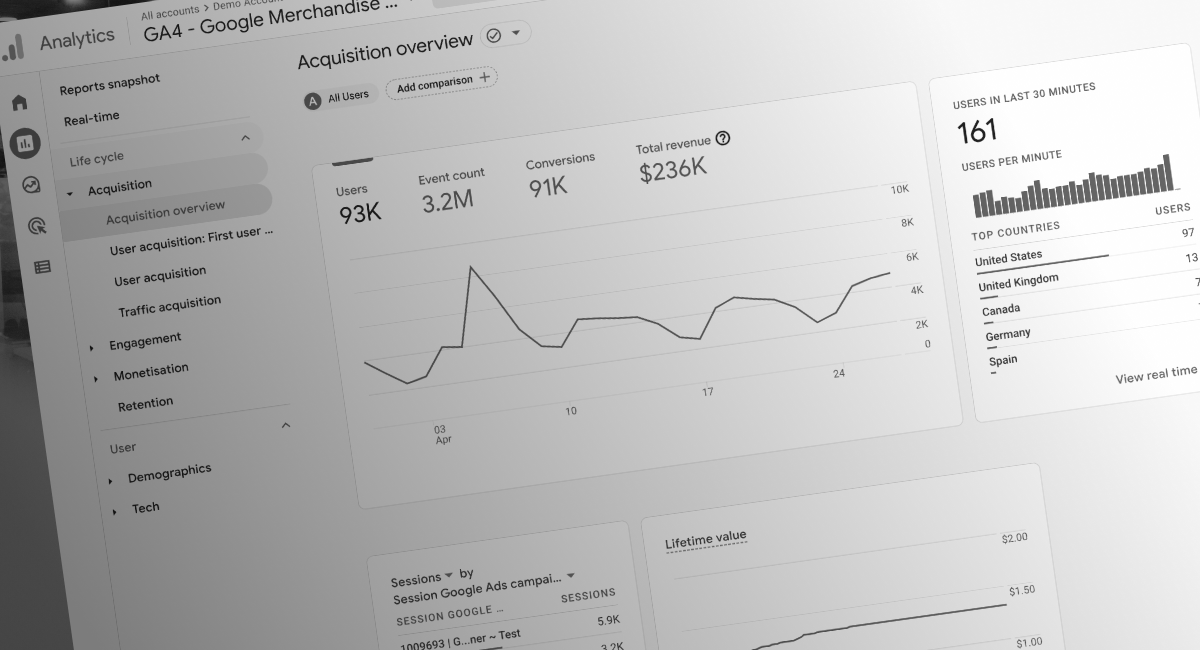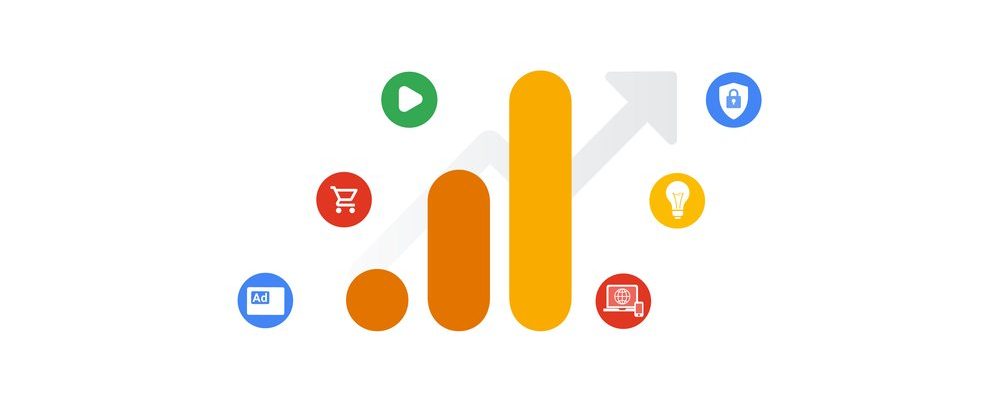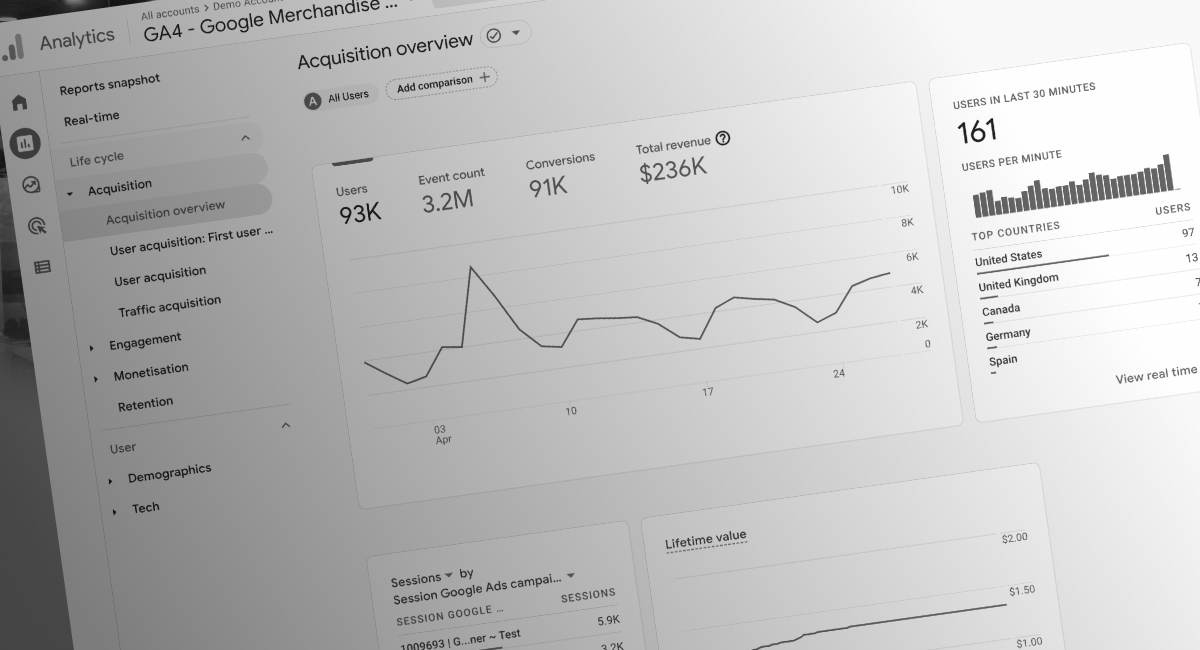Universal Analytics is the version of Google Analytics that nearly every marketer uses to track their site traffic. It was first introduced in 2012 and since then, has allowed us to accurately track and measure user behaviour.
For anyone not aware, Google is sunsetting Universal Analytics (UA) in 2023 and replacing it with Google Analytics 4 (or GA4), which was introduced a couple of years ago. By July 1st, 2023, new data will no longer be available on UA.

Why Is Universal Analytics Going Away?
What’s the reason for this shift? Like everything in life, things change and evolve. When UA first came on the scene, the internet looked quite different—yes, even just 10 years ago.
In Google’s own words:
“Universal Analytics was built for a generation of online measurement that was anchored in the desktop web, independent sessions and more easily observable data from cookies. This measurement methodology is quickly becoming obsolete. Meanwhile, Google Analytics 4 operates across platforms, does not rely exclusively on cookies and uses an event-based data model to deliver user-centric measurement.” (Source)

The Main Benefits of GA4
Google Analytics 4 is designed to support your business more than ever before. That’s not to say that UA doesn’t provide invaluable insights into your web traffic, but the newish GA4 focuses more on your business’ key objectives.
Here’s what you can expect from GA4:
- You can now view the complete user lifecycle that isn’t broken into independent sessions, which provides a better understanding of your customers.
- Attribution credits help you better understand how your marketing leads to conversions.
- You can better manage privacy controls at the user level while still holding on to key metrics.
- Machine learning (previously only available on the paid version of Google Analytics 360) gives you better insight about user behaviour and generates new users while pinpointing room for improvement within your marketing efforts.
- Better Google product integration helps you optimise your marketing campaigns.
- More customization helps you meet your data governance needs.
UA & GA4: Let’s Compare Metrics
There are quite a few differences between UA and GA4, particularly when it comes to reading your reports. Take a look at the key changes in your metrics (to see a more thorough list, check out what Google has to say on the subject):
-
2 User metrics (total, new)
-
2 Pageview metrics (Pageview, Unique Pageview)
-
Sessions are cut off at midnight
-
Goal Completions (old name)
-
Only one conversion (per goal) per Session
-
Bounce Rate is a session with a single page view.
-
Total Events are counted every time a Category, Action, or Label event is triggered.
-
3 User metrics (total, new, active)
-
1 Pageview metric (Views)
-
Sessions are no longer restarted after midnight
-
Conversion event (new name)
-
Every instance is counted of the conversion event
-
Engagement Rate is the number of ‘engaged’ sessions that last longer than 10 seconds (or when the user clicks or visits a 2nd page). Bounce Rate is no longer being used.
-
There are no longer Categories, Actions, or Labels. Every action is an event.
Why You Should Prepare Now for 2023
One of the main reasons to switch to GA4 before July 2023 is that you won’t be able to pull any reports further back than the day of your GA4 implementation. Waiting until the very last moment to switch to GA4 means you may lose more than an entire year of valuable data.
If you’ve already taken a look at GA4, you may have noticed that a lot of the terminology (such as what’s included in the table above) has changed. By running both GA4 and UA at the same time, you’ll be able to cross reference the reports from the new analytics against the old, which will help you get used to the new system faster.
Lastly, GA4 is equipped with more features that will ultimately improve your business, so why not jump on that bandwagon now when you can take your time with it?
How to Prepare for GA4
The most obvious thing you can do to prepare for GA4 is to implement it. And we recommend doing this by July 2022 so you can take advantage of a full year of reporting.
Implementing it as soon as possible will also allow you to familiarise yourself with the new terminology and layout.
Final Thoughts
While migrating to a new system can seem like a daunting task (especially if you’re just getting the hang of the old one) your future self will be thanking you for taking a proactive approach to the inevitable sunsetting of Universal Analytics.
















